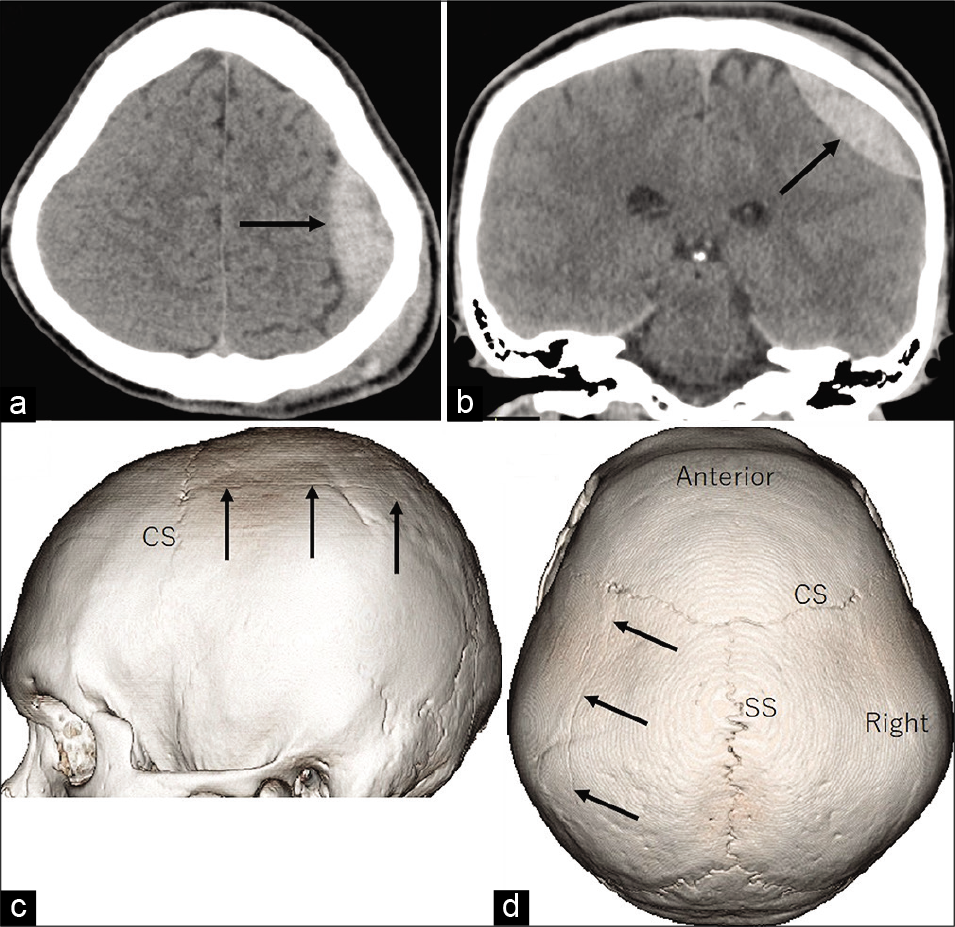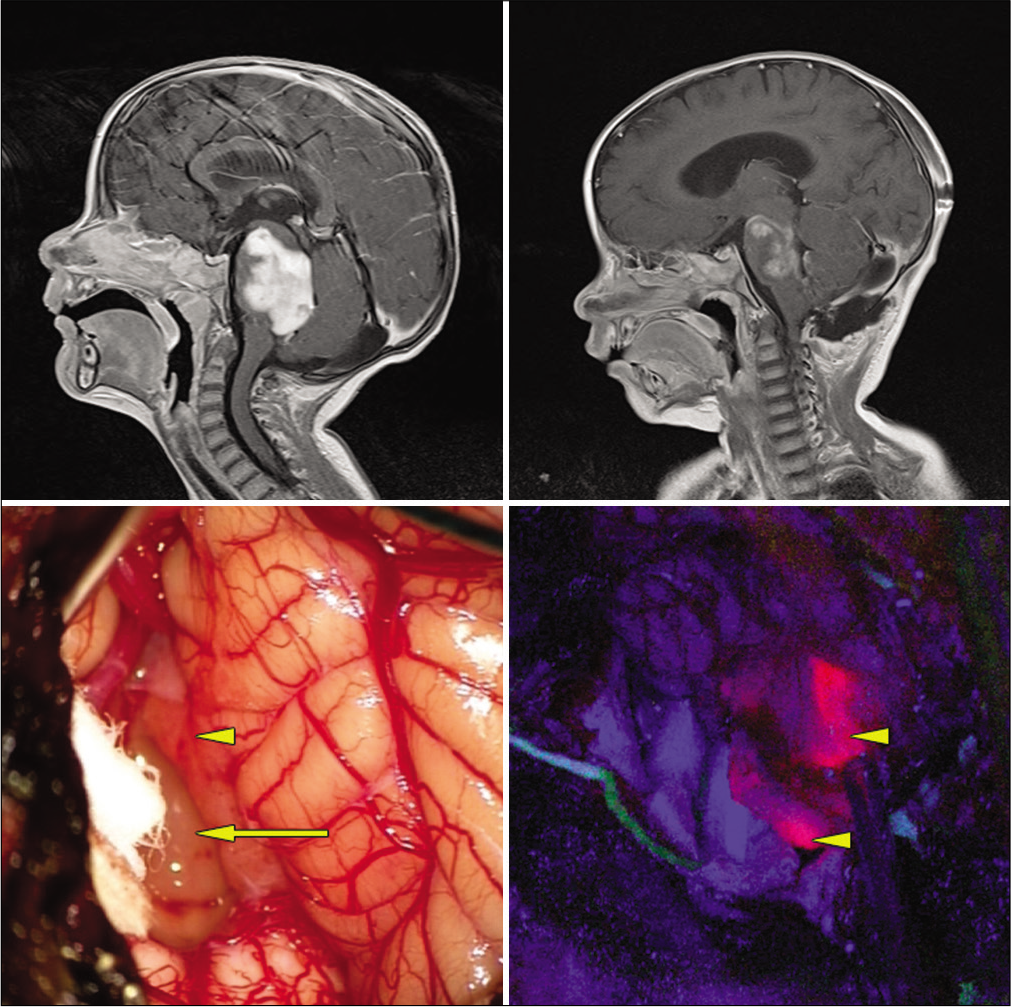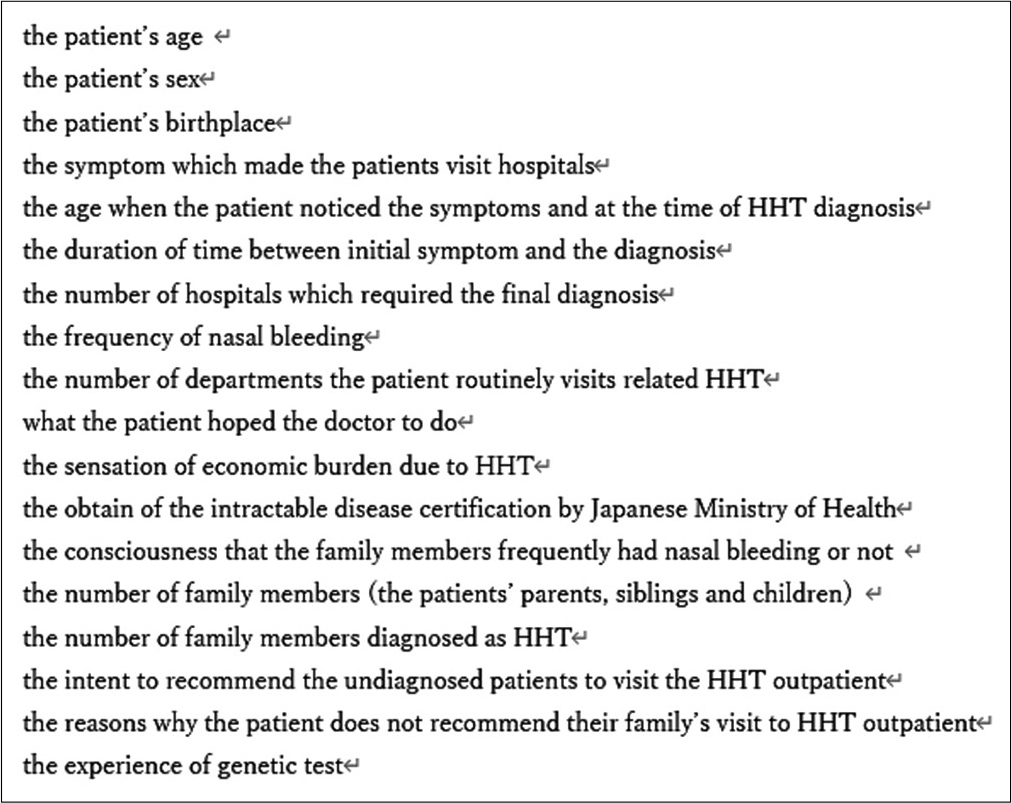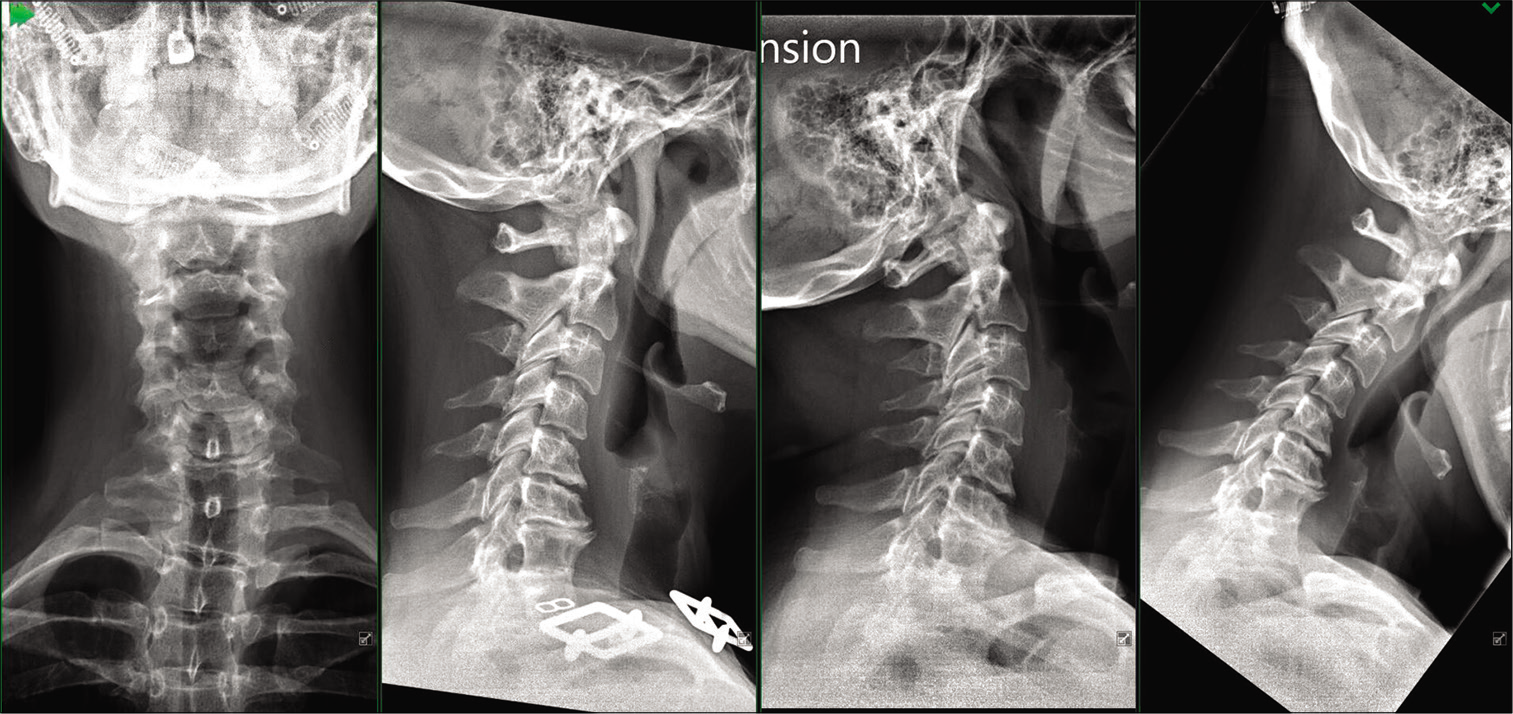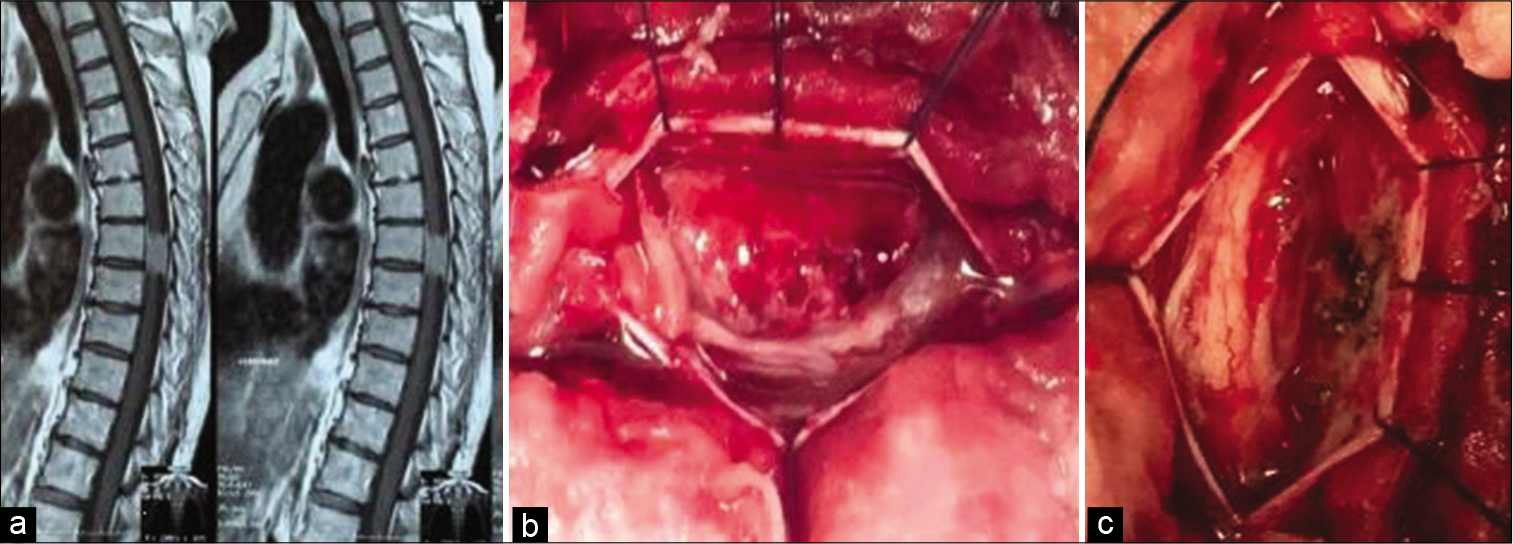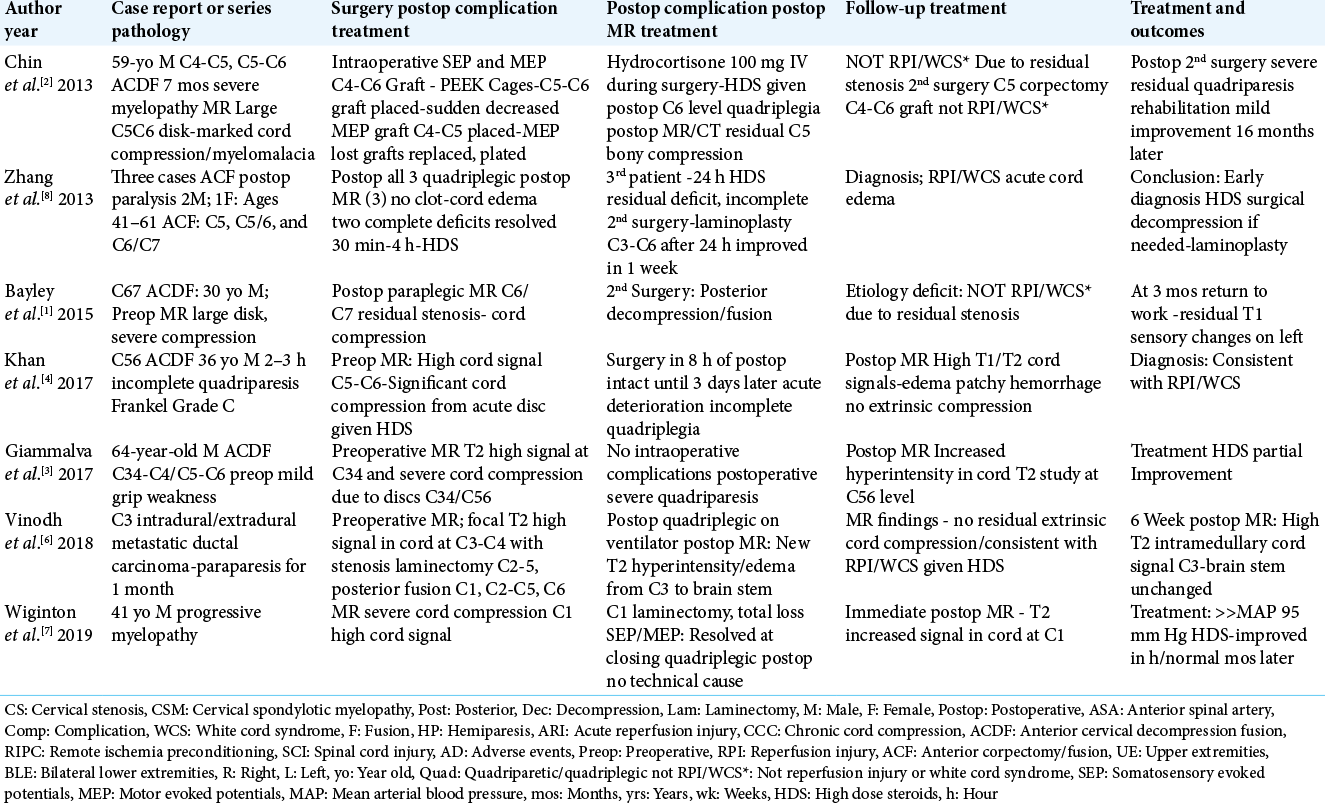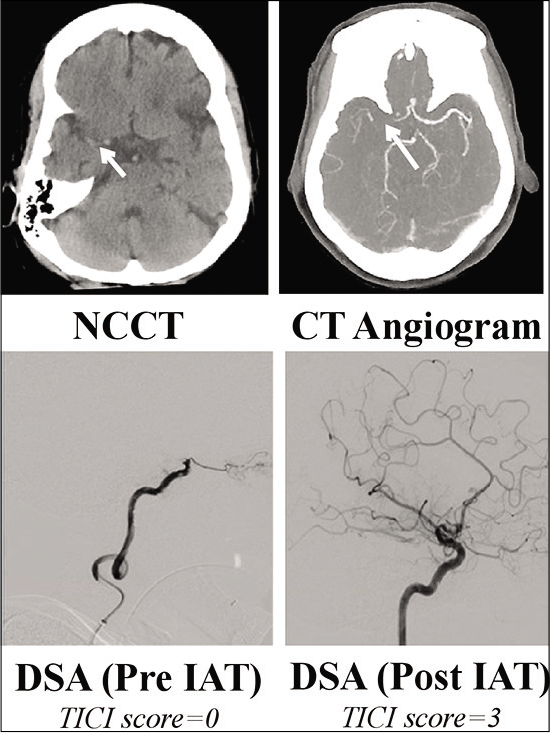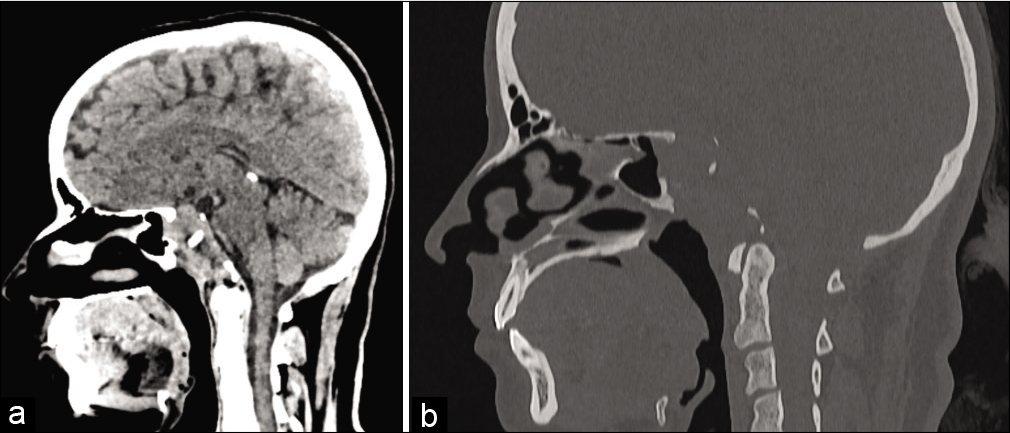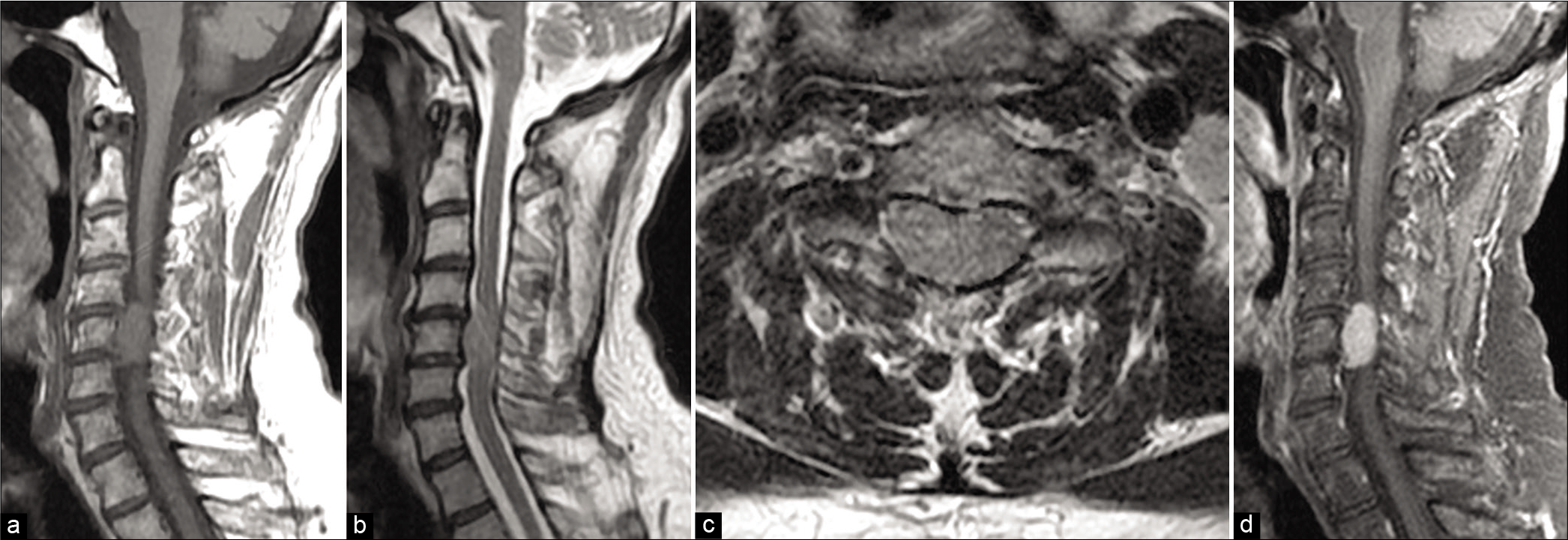Traumatic acute epidural hematoma caused by injury of the diploic channels
Date of publication: 08-Oct-2020
Background: Traumatic acute epidural hematomas (EDHs) commonly develop by rupture of the meningeal arteries. EDH caused by an injury of the diploic channel (DC) has not been reported.
5-aminolevulinic acid-guided surgery for focal pediatric brainstem gliomas: A preliminary study
Date of publication: 08-Oct-2020
Background: There is a growing body of literature supporting the use of 5-aminolevulinic acid (5-ALA) in the pediatric population, however, its use is still considered “off label” in this setting. In this retrospective study, we report our experience using 5-ALA in pediatric patients with focal brainstem gliomas (BSGs).
A questionnaire-based survey to evaluate and improve the current HHT medical and social condition in Japan
Date of publication: 02-Oct-2020
Background: Hereditary hemorrhagic telangiectasia (HHT) is a genetic systemic vascular disease affecting multiple organs and shows recurrent intractable symptoms. This disease has not been widely recognized in Japan until recently. Both diagnosed HHT patients and potential ones have faced difficulties because of the unfamiliarity with the disease in Japan. To evaluate the effect and degree of such a Japanese situation, a questionnaire-based survey was executed in this study.
Two-level cervical disc arthroplasty in patients with Klippel-Feil syndrome: A case report and review of the literature
Date of publication: 02-Oct-2020
Background: Klippel-Feil syndrome (KFS) is defined by multiple abnormal segments of the cervical spine with congenital synostosis of two or more cervical vertebrae. KFS patients who demonstrate progressive symptomatic instability and/or neurologic sequelae are traditionally managed with operative decompression and arthrodesis.
Delayed recovery from paraplegia following resections of thoracic meningiomas
Date of publication: 02-Oct-2020
Background: In this retrospective study, we evaluated the patterns of postoperative recovery for patients who were initially paraplegic before the excision of thoracic spine meningiomas. We also determined how the various prognostic factors impacted outcomes.
Reperfusion Injury (RPI)/White Cord Syndrome (WCS) Due to Cervical Spine Surgery: A Diagnosis of Exclusion
Date of publication: 02-Oct-2020
Background: Following acute cervical spinal cord decompression, a subset of patients may develop acute postoperative paralysis due to Reperfusion Injury (RPI)/White Cord Syndrome (WCS). Pathophysiologically, this occurs due to the immediate restoration of normal blood flow to previously markedly compressed, and under-perfused/ischemic cord tissues. On emergent postoperative MR scans, the classical findings for RPI/ WCS include new or expanded, and focal or diffuse intramedullary hyperintense cord signals consistent with edema/ischemia, swelling, and/or intrinsic hematoma. To confirm RPI/WCS, MR studies must exclude extrinsic cord pathology (e.g. extramedullary hematomas, new/residual compressive disease, new graft/vertebral fracture etc.) that may warrant additional cervical surgery to avoid permanent neurological sequelae.
Brain abscess – A rare complication of endovascular treatment for acute ischemic stroke
Date of publication: 02-Oct-2020
Background: Brain abscess is a neurosurgical emergency, which can arise through direct bacterial seeding or hematogenous spread. Rarely, brain abscess formation has been reported following ischemic stroke. An increasingly utilized therapy for stroke is mechanical thrombectomy, and within this report, we present a case of brain abscess formation following this procedure.
Aspergillus masquerading as clival chordoma
Date of publication: 02-Oct-2020
Cervical meningioma resection including the inner dura through an open-door laminoplasty using hydroxyapatite spacers: A case report
Date of publication: 02-Oct-2020
Background: The ideal surgery for spinal cord tumors is complete resection to prevent recurrence. However, it should be accomplished safely/effectively without risking increased morbidity. Here, we report a cervical meningioma that was totally resected, including the inner dura, through a laminoplasty performed with hydroxyapatite (HA) spacers.
Acute subdural hematoma recurrence during drain removal associated with spontaneous intracranial hypotension – A non-reported complication
Date of publication: 02-Oct-2020
Background: Spontaneous intracranial hypotension (SIH) is an uncommon, benign, and generally self-limiting condition caused by low cerebrospinal fluid (CSF) volume and pressure usually caused by a CSF leak. Patients with SIH have an increased incidence of subdural hematomas (SDH), which may be bilateral and recurrent.


